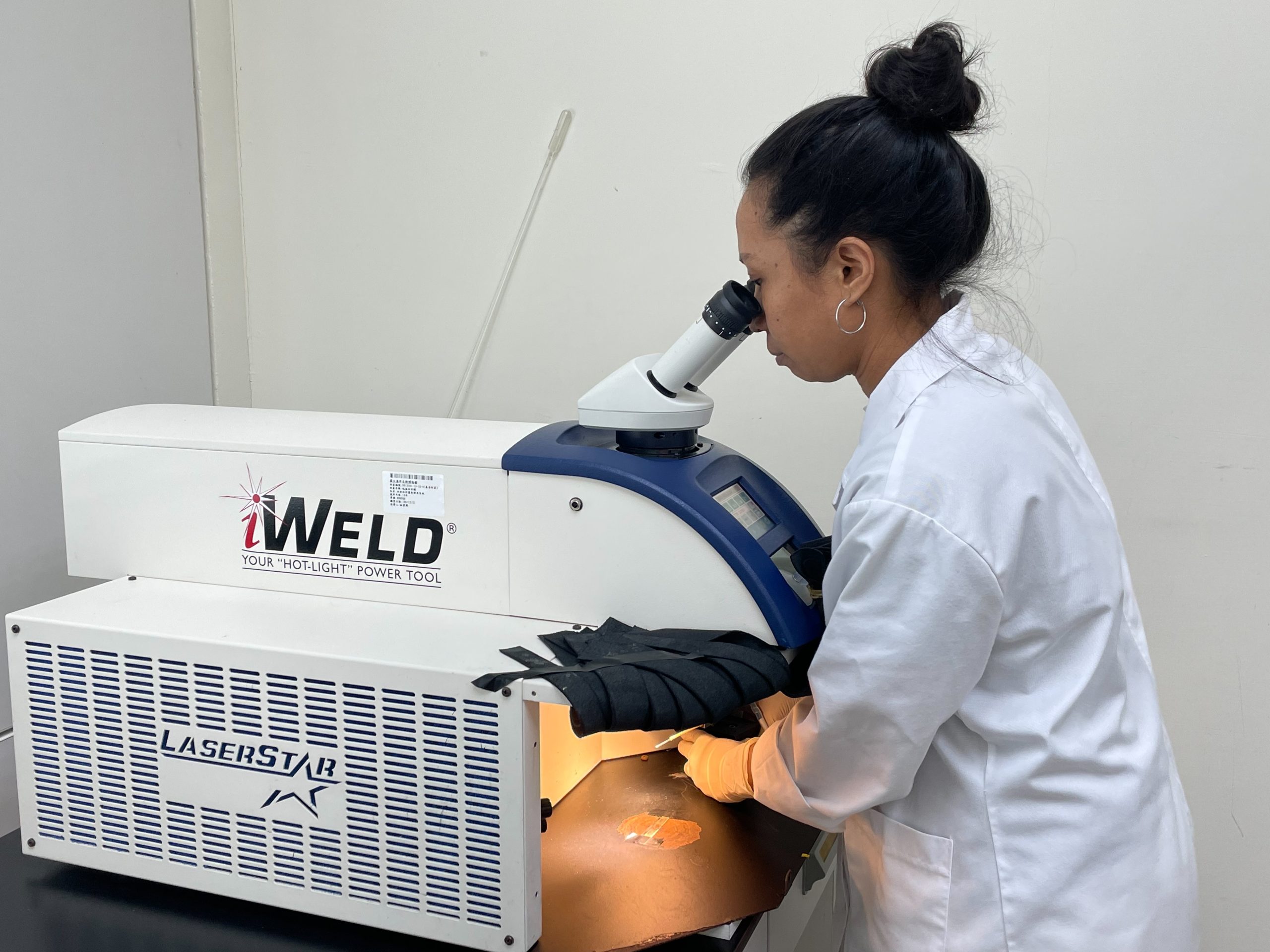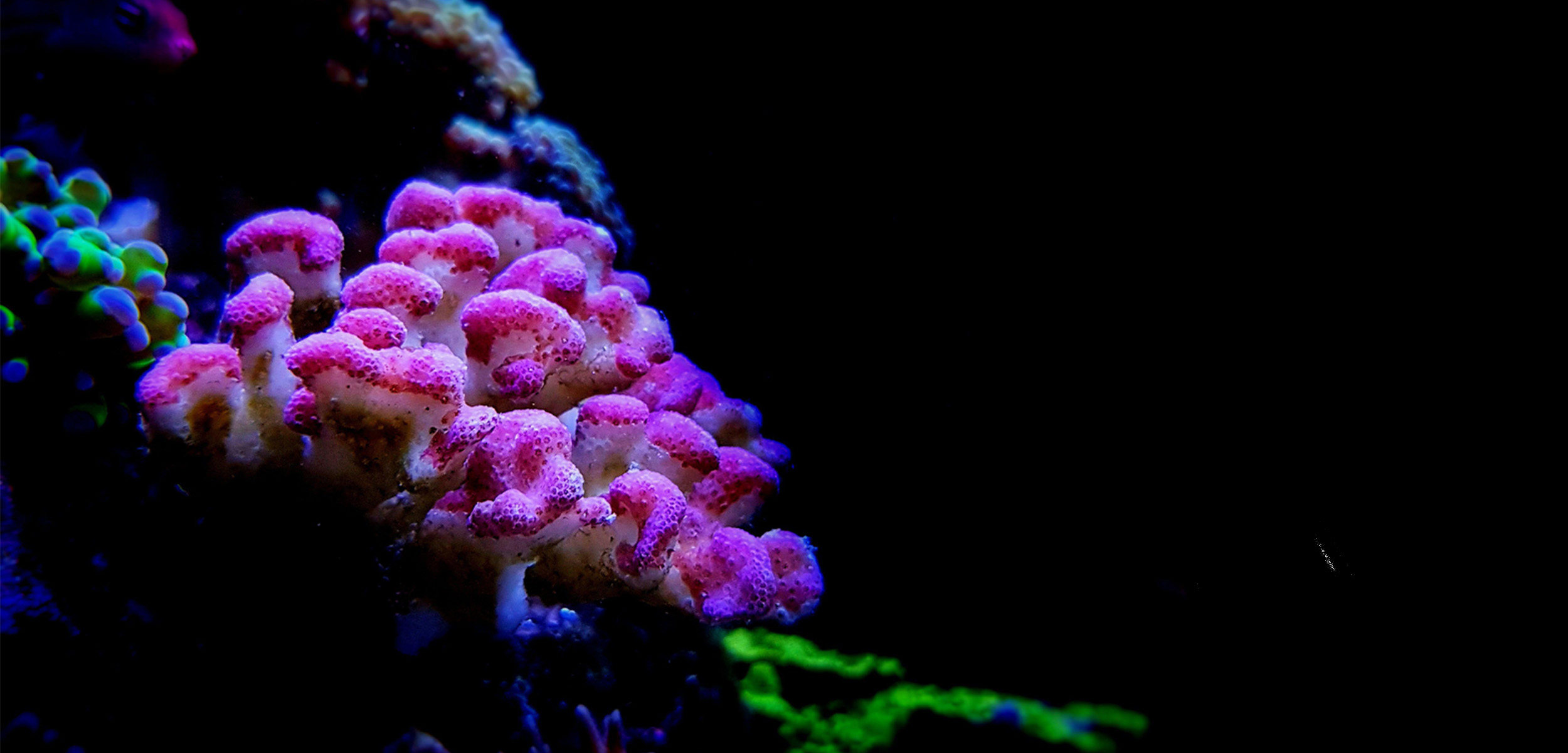These Cryopreserved Baby Corals Are the First to Reach Adulthood
Deep-frozen corals are growing up. Could the futuristic technique eventually save dying reefs?
Article body copy
Arah Narida leans over a microscope to gaze into a plastic petri dish containing a hood coral. The animal—a pebbled blue-white disk roughly half the size of a pencil eraser—is a marvel. Just three weeks ago, the coral was smaller than a grain of rice. It was also frozen solid. That is, until Narida, a graduate student at National Sun Yat-sen University in Taiwan, thawed it with the zap of a laser. Now, just beneath the coral’s tentacles, she spies a slight divot in the skeleton where a second coral is beginning to bud. That small cavity is evidence that her hood coral is reaching adulthood, a feat no other scientist has ever managed with a previously frozen larva. Narida smiles and snaps a picture.
“It’s like if you see Captain America buried in snow and, after so many years, he’s alive,” she says. “It’s so cool!”
For nearly 20 years, scientists have been cryopreserving corals—freezing them at temperatures as low as -196 °C for long-term storage. The goal has been to one day plant corals grown from cryopreserved samples on reefs plagued by bleaching and acidification. Yet, progress has been agonizingly slow. When Narida and her colleagues published a study earlier this year detailing how they successfully grew adult corals from cryopreserved larvae, it was a milestone for the field.
Coral cryopreservation is difficult in part because freezing and thawing wreak havoc on cells. As scientists lower the temperature, the water in the coral’s cells turns to ice, leaving them dehydrated and deflated. Reheating is just as delicate: if the coral is warmed too slowly, melting ice can refreeze and tear through the cells’ outer membranes. The result is a soggy mess, as the cells’ innards ooze out through jagged holes—picture a frozen strawberry becoming limp and shriveled as it thaws.
Through trial and error, though, cryobiologists have developed the techniques that helped Narida grow her hood coral to adulthood. To prevent ice damage, Narida says, she washes the animals in antifreeze first. Antifreeze can be toxic, but it also seeps into the larvae’s cells and pushes out the water, helping the coral survive the next step: being dunked in liquid nitrogen.

Arah Narida, a graduate student at National Sun Yat-sen University in Taiwan, thaws a cryopreserved hood coral larva with a high-powered laser. In a recent experiment, Narida noticed that larvae collected in the fall seemed more resilient to being frozen and thawed—perhaps because they had already begun adjusting to colder temperatures in the wild. Photo courtesy of Arah Narida
In 2018, researchers reported that they had managed to get a coral larva to survive freezing and thawing for the first time. The scientists had added gold nanoparticles to their antifreeze to help the corals warm evenly during reheating. However, the thawed larvae were unable to settle and develop into adults. Instead, they kept swimming until they died.
When Narida began her experiments with hood corals in 2021, she included gold in her antifreeze recipe and combined several different antifreeze chemicals to reduce the solution’s toxicity. To thaw the animals quickly and minimize damage, Narida used a high-powered laser designed for welding jewelry. Then, she carefully washed the antifreeze away with seawater, rehydrating the corals. In the end, a whopping 11 percent of larvae in the experiment survived thawing, then settled, and developed into adults.
Leandro Godoy, a coral cryobiologist at the Federal University of Rio Grande do Sul in Brazil, is impressed by how many larvae survived after settling. “It’s a huge step,” he says, considering that, in the wild, only about five percent of corals make it that far.
Narida’s oldest thawed coral has survived for nearly nine months and is still growing. But she has more work to do. The larvae that survive cryopreservation are exceptionally fragile and can experience side effects that slow their development. They need careful tending in the lab, like ICU patients after surgery, says Chiahsin Lin, a coral cryobiologist at Taiwan’s National Dong Hwa University and Narida’s coauthor on the study.
The challenge now is to boost the coral’s survival even more to make large-scale reef restoration from cryopreserved larvae practical, Godoy explains.
“We still need to improve,” says Narida. “But this is already a success story.”
Correction: This story’s headline initially read, “Cryopreserved Corals Can Now Have Babies.” It has been changed to more accurately reflect the research.

